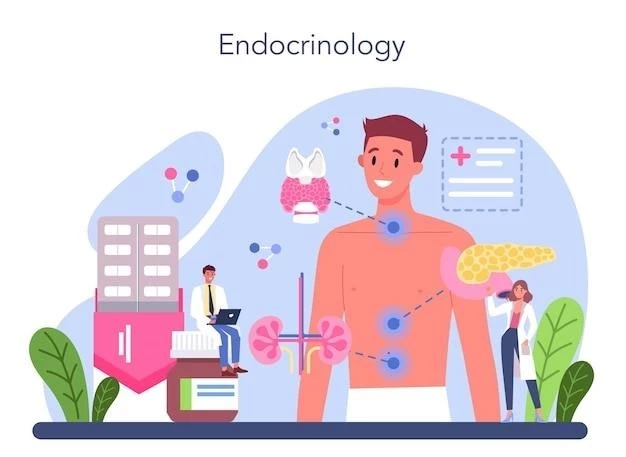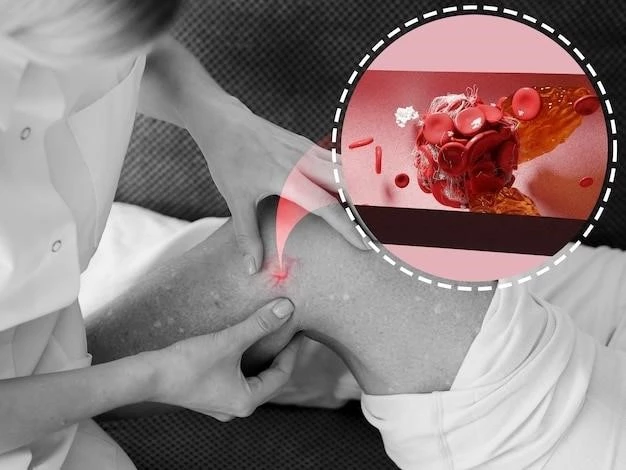Introduction to Erythropoietic Protoporphyria (EPP)
Erythropoietic Protoporphyria (EPP), a rare genetic photodermatosis, is characterized by severe photosensitivity leading to pain and itching upon sun exposure. The disease results from a deficiency in the enzyme ferrochelatase, causing the accumulation of protoporphyrin in red blood cells. EPP often manifests in early childhood with immediate discomfort upon sunlight exposure, impacting the daily lives of affected individuals.
Definition and Rarity
Erythropoietic Protoporphyria (EPP) and X-linked Protoporphyria are rare genetic photodermatoses, leading to severe photosensitivity and diagnostic challenges due to limited awareness among healthcare providers. EPP is a childhood-onset condition, causing immediate discomfort upon sunlight exposure, impacting patients’ quality of life. The prevalence of these disorders is estimated to range from 1 in 75,000 to 1 in 200,000 individuals.
Symptoms and Clinical Presentation
Erythropoietic Protoporphyria (EPP) is characterized by severe pain, burning, itching, and swelling of the skin within minutes of sun exposure, impacting daily activities. The condition often presents in childhood with immediate discomfort upon sunlight exposure, leading to redness, edema, and skin lesions that persist for hours or days. Phototoxic reactions can cause significant distress and affect patients’ quality of life.
Cutaneous Photosensitivity
Erythropoietic Protoporphyria (EPP) presents with severe cutaneous photosensitivity, leading to immediate pain, burning, itching, swelling, and redness upon exposure to sunlight or ultraviolet light. This rapid-onset discomfort can persist for hours or days, significantly impacting the affected individuals’ daily lives. The symptoms may be disproportionate to the visible skin lesions, making diagnosis and management challenging.
Pain and Itching
Individuals with Erythropoietic Protoporphyria (EPP) experience severe pain, burning sensation, itching, and skin swelling upon sun exposure. This immediate discomfort can persist for hours or even days, leading to significant distress and impacting daily activities. The symptoms, often disproportionate to visible skin changes, pose challenges in management and can profoundly affect the quality of life for those affected by the condition.
Causes of Erythropoietic Protoporphyria
Erythropoietic Protoporphyria (EPP) is primarily caused by compound loss-of-function mutations in the gene encoding ferrochelatase (FECH) found on chromosome 18q21. These mutations result in the accumulation of protoporphyrin in red blood cells, leading to severe photosensitivity and potential liver complications in affected individuals.
Genetic Mutations
Erythropoietic Protoporphyria (EPP) predominantly arises from compound loss-of-function mutations in the ferrochelatase gene (FECH) on chromosome 18q21. These mutations disrupt heme biosynthesis, leading to the accumulation of protoporphyrin in red blood cells and tissues, triggering severe cutaneous photosensitivity and potential liver complications.
Diagnosis and Monitoring
Diagnostics for Erythropoietic Protoporphyria (EPP) typically involve testing for elevated protoporphyrin levels without increased coproporphyrin, indicating a possible diagnosis. Monitoring includes regular evaluations of symptoms, photosensitivity reactions, and liver function tests to assess disease progression and manage potential complications effectively.
Consensus Guidelines
The diagnosis, monitoring, and management of Erythropoietic Protoporphyria (EPP) and X-linked Protoporphyria are guided by evidence-based consensus guidelines. These guidelines aim to streamline healthcare practices, facilitating timely identification, effective monitoring of disease progression, and optimized treatment strategies for individuals affected by these rare genetic photodermatoses.
Laboratory Testing
Laboratory testing for Erythropoietic Protoporphyria (EPP) involves assessing elevated protoporphyrin levels, particularly without increased coproporphyrin levels, to aid in the diagnosis. These tests help confirm the presence of the condition and guide healthcare providers in monitoring disease progression and determining the appropriate management strategies.
Management and Treatment
For Erythropoietic Protoporphyria (EPP), management focuses on preventing and relieving symptoms of photosensitivity. This includes avoiding sunlight exposure, using protective clothing and sunscreens, and considering specific medications to manage pain. Photoprotection strategies are essential to minimize discomfort and improve quality of life for individuals with EPP.
Medications for Pain Relief
The management of Erythropoietic Protoporphyria (EPP) often involves the utilization of specific medications to alleviate pain and discomfort associated with photosensitivity reactions. These medications aim to provide relief from the burning, itching, and swelling experienced upon sun exposure, improving the quality of life for affected individuals.
Photoprotection Strategies
Effective photoprotection strategies are crucial for managing Erythropoietic Protoporphyria (EPP) and reducing the impact of photosensitivity reactions. This includes wearing protective clothing, using broad-spectrum sunscreens, seeking shade, and employing physical barriers to minimize exposure to sunlight, ultimately helping individuals with EPP to avoid painful symptoms and improve their quality of life.
Prognosis and Complications
Understanding the prognosis and potential complications of Erythropoietic Protoporphyria (EPP) is essential for effective management. Individuals with EPP may face the risk of developing liver disease due to the accumulation of protoporphyrin. Long-term outlook varies, with proactive monitoring and adherence to photoprotection strategies playing a crucial role in mitigating complications.
Potential Liver Disease
Erythropoietic Protoporphyria (EPP) poses the risk of potential liver complications due to the accumulation of protoporphyrin in red blood cells and tissues. This accumulation can lead to liver disease, emphasizing the importance of proactive monitoring and appropriate management strategies to address this potential complication.
Long-Term Outlook
The long-term outlook for individuals with Erythropoietic Protoporphyria (EPP) varies, with proactive monitoring and adherence to photoprotection strategies playing a crucial role in minimizing complications. Early diagnosis and effective management can help individuals with EPP lead fulfilling lives while minimizing the impact of potential long-term complications associated with the condition.
Prevalence and Epidemiology
Erythropoietic Protoporphyria (EPP) is considered a rare genetic disorder, with an estimated prevalence ranging from 1 in 75٫000 to 1 in 200٫000 individuals. This condition typically presents in early childhood٫ emphasizing the need for greater awareness among healthcare professionals to facilitate timely diagnosis and management.
Global Occurrence
Erythropoietic Protoporphyria (EPP) is a rare genetic disorder reported worldwide, with a prevalence estimated between 1 in 75,000 to 1 in 200,000 individuals. The condition typically manifests in early infancy, emphasizing the need for increased awareness and timely diagnosis to address the challenges associated with this rare genetic photodermatosis.

Research and Developments
Research on Erythropoietic Protoporphyria (EPP) focuses on advancing diagnostic methods, exploring novel treatment options, and developing innovative approaches to manage photosensitivity and potential complications. Ongoing clinical trials aim to improve outcomes and enhance the quality of life for individuals with this rare genetic photodermatosis.
Clinical Trials and Treatment Innovations
Clinical trials and ongoing research initiatives are exploring innovative treatment approaches for Erythropoietic Protoporphyria (EPP). These endeavors aim to develop novel therapies that effectively alleviate symptoms of photosensitivity and mitigate the risk of potential complications associated with the condition, offering hope for improved outcomes and quality of life for affected individuals.
Patient Education and Support
Empowering patients with Erythropoietic Protoporphyria (EPP) through education and support is essential. Patients can benefit from understanding their condition, learning about photoprotection strategies, accessing resources for managing symptoms, and connecting with support groups or organizations specializing in rare genetic dermatoses.
Coping Strategies
For individuals with Erythropoietic Protoporphyria (EPP), implementing effective coping strategies can help manage the challenges posed by photosensitivity reactions. Strategies may include lifestyle modifications, psychological support, and building resilience to navigate the impact of the condition on daily life. Seeking guidance from healthcare professionals and support networks can also aid in developing coping mechanisms tailored to individual needs.
Patient Resources
People affected by Erythropoietic Protoporphyria (EPP) can benefit from various patient resources aimed at providing support, education, and practical guidance. These resources may include patient advocacy groups, informational websites, counseling services, and access to healthcare professionals specializing in the management of rare genetic dermatoses. Engaging with such resources can help individuals navigate their condition more effectively and enhance their quality of life.

Conclusion
In conclusion, Erythropoietic Protoporphyria (EPP) is a rare genetic photodermatosis that requires timely diagnosis and tailored management approaches. By adhering to evidence-based guidelines, utilizing innovative treatments from ongoing research, and empowering patients with education and support, individuals with EPP can effectively navigate the challenges of photosensitivity and mitigate potential complications, ultimately enhancing their quality of life and well-being.
